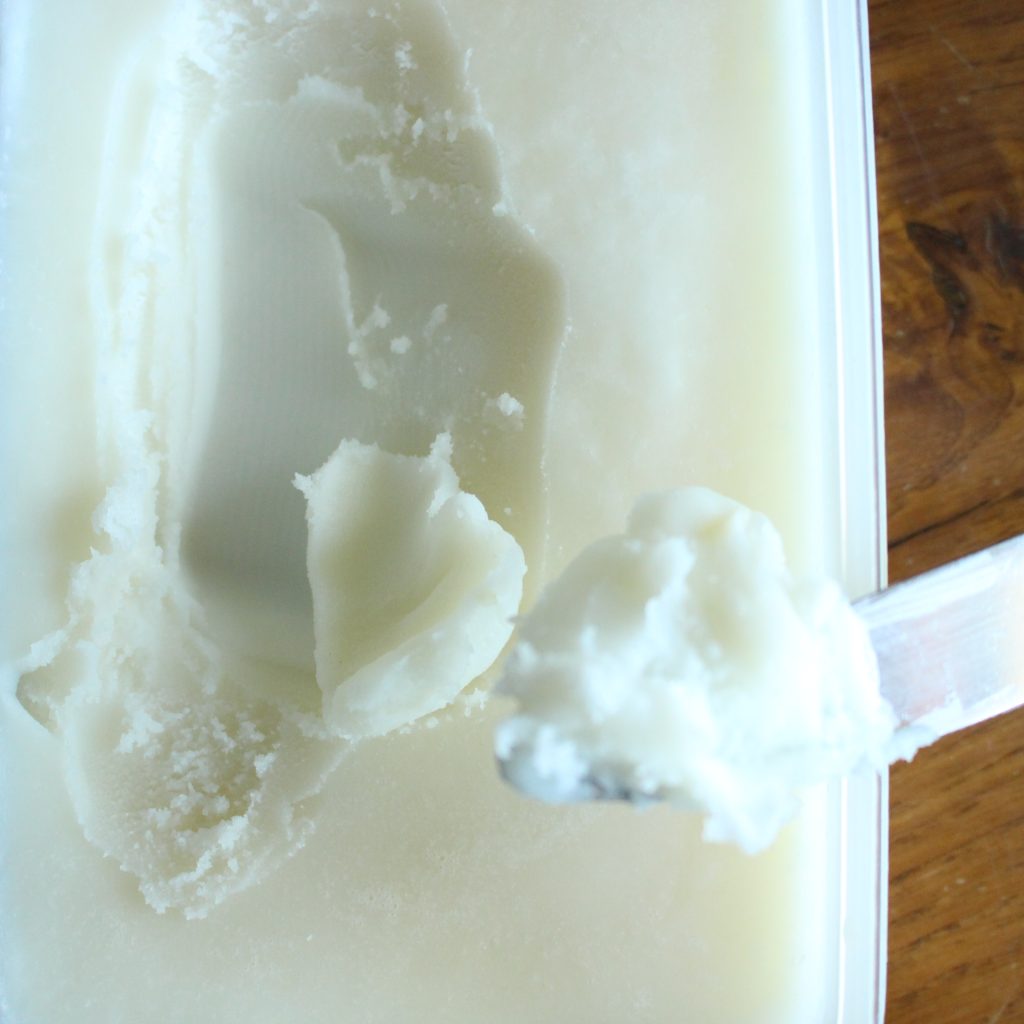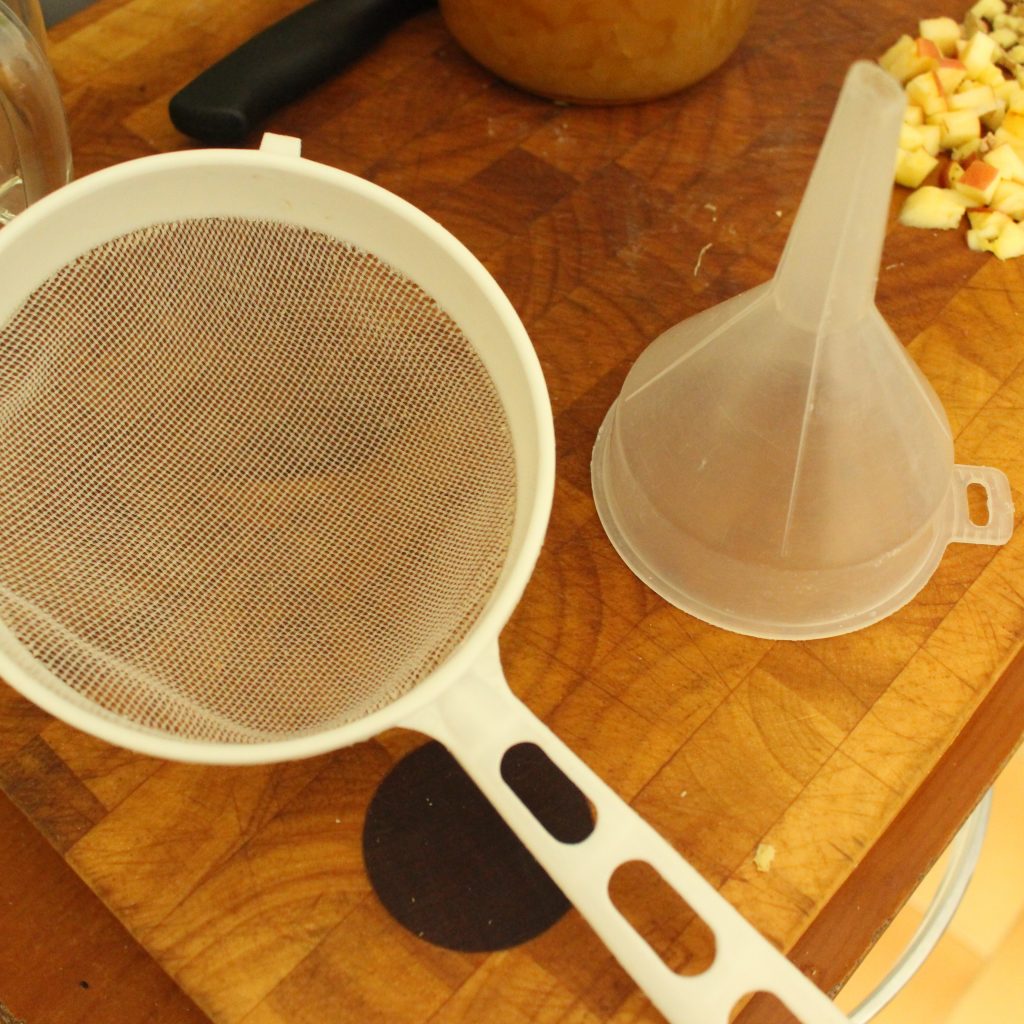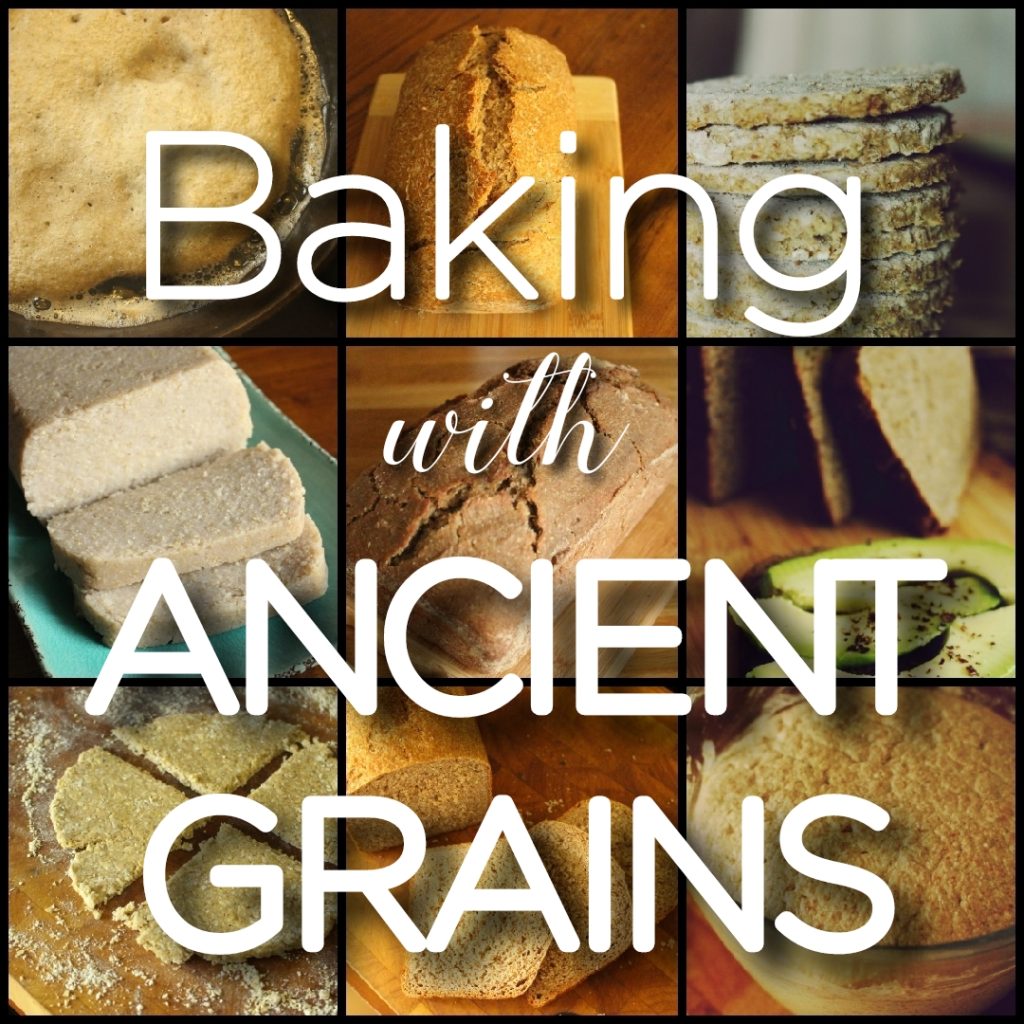The last two weekends our tiny kitchen has felt like a lard production factory – we’ve rendered over eight kilos (18 pounds) of pork back fat. Every container in the house has been requisitioned to hold the resulting lard and our fridge and freezer are bursting with creamy, delicious fat!

Why so much lard?
Because, next week, we will leave our home and travel to Britain for just over a month. I am looking look forward to the trip in so many ways – seeing friends and family and reuniting my son, Gabriel, with his grandparents, but, being away from our kitchen is a challenge for me.
There are some mainstays of our diet, like lard, that are difficult to source away from home and I’m busy preparing the essentials that we’ll pack into our two suitcases to help us eat well when we’re away. I’ve spent long stretches of time away from a ‘home’ kitchen, without the luxury of a car boot, living out of suitcases and I’ve still managed to feel good about how I’m eating and the food I’m giving my family.
In this article, I’ll outline some cornerstones to eating ancestrally away from your home and give you examples from my own kitchen that you can take away and use for yourself!
Eating Ancestrally Away From Home:
1/ Work out what’s important to you
2/ Choose where you stay carefully
3/ identify where you can compromise most easily
4/ Think about your ‘essential’ equipment
Let’s look at these one by one:
1/ Work out what’s important to you (and use that to guide your choices)
What are the foundations of your diet? Are they easily accessible in the location where you’ll be staying? If not, prioritise taking these.
For us, the three most important daily inputs that are hard/expensive to replicate when we’re away are probiotics, sourdough bread and good fat. Hence, these are the three things I focus on.
Probiotics
The two easiest probiotics from our routine to travel with are sauerkraut and water kefir. Here’s how I organise it:
Sauerkraut: A month before we go, I make a special two-kilo (four-and-a-half pound) jar of sauerkraut which is destined to be transferred into a tightly-locking food container and travel with us in our suitcase. I always wrap this food container in a plastic bag (or two) and tie tightly because air pressure changes cause containers to leak and I don’t want sauerkraut juice all over my clothes!

Water Kefir: The night before we leave, I prepare four tablespoons of water kefir grains for their journey! I mix up a sugar/water solution and put it into small jar, adding the water kefir grains and screwing the lid on tightly. I then wrap this jar in a plastic bag and seal it tightly. The jar will nestle in the middle of our case (ideally surrounded by socks…I’ve never had one smash this way!).
When we arrive, I buy two two-litre water bottles and drink/decant the water. I cut the top quarter off one of them and discard it, using the bottom three-quarters as the container for my water kefir’s first ferment. I fill it up with sugar/water solution, add my well-travelled grains and cover it with whatever I can find (a cut-up bit of plastic bag, a face towel, some kitchen paper). The second of the two water bottles becomes the container for the kefir’s second fermentation. I use these plastic bottles over and over for the duration of our trip, often transporting them from kitchen to kitchen if we’re moving location.
Sourdough bread
In order to continue to make good quality spelt and rye bread whilst away I do two things:
1/ Pre-order local flour to arrive in location where I’ll be
2/ Take my sourdough starter with me
I also often take a lightweight silicone loaf tin with me for baking.
It is very possible to take sourdough starter on a long journey. Refresh it, at a low hydration (70% hydration works for my rye starter), just before you go. When you arrive check how it’s doing and refresh again if necessary. (If you want more information on creating and maintaining a rye sourdough starter, check out my pay-what-you-can course here.)

Making sourdough bread with flours from many different locations has taught me so much about uniqueness and beauty of grains and helped me become more intuitive, less perfectionist baker. I’d recommend giving it a go!
Fat
This year we will take around two kilos (4.5 pounds) of home-rendered lard to England with us. Ideally, we’d have more, but we don’t have the luggage space, so I’ll be very deliberate in my use of it (and we’ll supplement it with bought butter and olive oil).
In order to get the lard to our destination, I freeze it before we travel. As I pack our suitcase, I deliberately reserve a space for the lard. It is, along with our toothbrushes, one of the last things that goes into the case before it’s zipped up!
2/ Choose where you stay carefully
Prioritise getting a kitchen!
It is challenging enough to be away from home and eat ancestrally, but to be without a kitchen makes it so much harder. Go out of your way to look for places to stay that have kitchens. Here in Europe, we would choose to stay in an AirBnB over an hotel because this.
If you are staying with friends and/or family, and the kitchen that you get to use is not so well-equipped, ask people if they have things you can borrow – a blender, some jars, loaf tin. Sharing what you make with them as a thank you is a beautiful exchange!
3/ Work out where you can compromise most easily
Trying to make our diets 100% perfect 100% of the time is such a stressful endeavour! Being out of your home environment is the time to compromise.
For example:
- When we’re travelling it’s harder to access raw milk, so we will either avoid milk or opt for good-quality pasteurised milk.
- My energy is limited; when we travel, I don’t often do the research/travel to get local meat. This is the time when I will consciously use other sources. We (shock, horror!) will go to supermarkets, choosing the least harmful produce we can find there.
4/ Think about your ‘essential’ equipment
Simple, good equipment can completely change our experience of cooking. What small tools do you use in your kitchen that you’d be lost without? Consider taking them with you.
Travelling (often with just one family suitcase for a month’s trip) I have become very selective with the equipment that I take with me. Here’s what’s going in this year:
My knife: Being able to work efficiently in an unfamiliar space is important. I find it incredibly frustrating using other peoples knives, and have my own that I take with me. If you are flying, remember to put this in your hold luggage!
My small funnel and my plastic sieve: These are essential for my water kefir making process. They are tiny and fit easily in my suitcase.

My small digital scales: I weigh ingredients for bread, and I’m constantly surprised how many kitchens don’t have good scales.
The luggage for our trips is often made up of a large percentage of food and kitchen equipment! This means that I have to take less of everything else, mainly less clothes and less shoes (on our last trip, I wore the same sandals every day for five weeks). This is, as a practice, really eye-opening. On my return home I often wonder why I need all the other things hanging in my wardrobe and, this way, I always feel good about the effort I went to to secure food for myself and the two people I love most in the world.
Happy travels!
P.S. If you want to hear more about travelling and eating ancestrally, check out Ancestral Kitchen Podcast #47 ‘The Christmas Survival Guide’ (where we talk about travelling and, in particular, cover scenarios I haven’t here like staying as someone’s guest and pre-ordering a lot of food) and also #15 of Kitchen Table Chats (where I go in depth into our logistics for our trip last year), the show that goes out to supporters of Ancestral Kitchen Podcast. To get access to this second one (plus so much more support) join the ‘companionship’ level of our supporters group on Patreon here

Bring ancient grain baking into your kitchen!
Download my free 30-page guide with five healthy and tasty 100% ancient grains recipes.

